- Joined
- Aug 25, 2010
- Messages
- 533
- Points
- 63
Hello forum.
As promised some weeks ago here is the first chapter of a complete tutorial how to make perfect r-candy powered fireworks.
I switched to the granulated version for many reasons, and I'm very happy of my choice and for the good results.
This is the first of many tutorials, and every tutorial that follow this will have a link to the previous one, so the result will
be a complete tutorial divided into various chapters, one for every different step.
First of all, 650 grams of KNO3 (without anticaking), 350 grams of sucrose, 20 grams of Titanium sponge (450-1000nm)
and 10 grams of red iron oxyde (Baltimora type) are placed inside a thick cast iron:
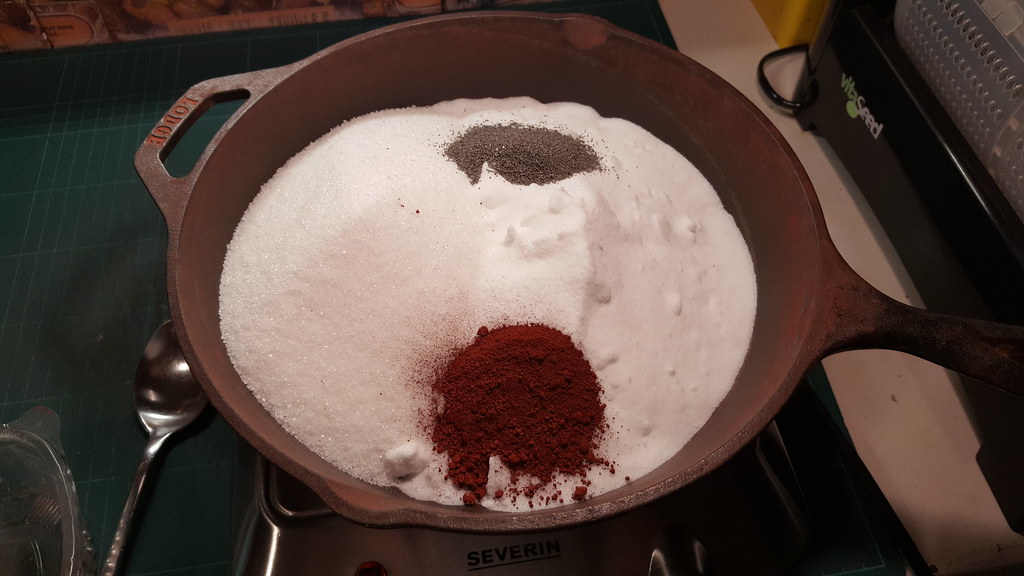
Adding enough distilled water to dissolve the chems. Please remind that too much water will lenghten the cooking time.
Vice versa, too few water will cause a bad dissolution of the chems because will be reached the saturation limit:
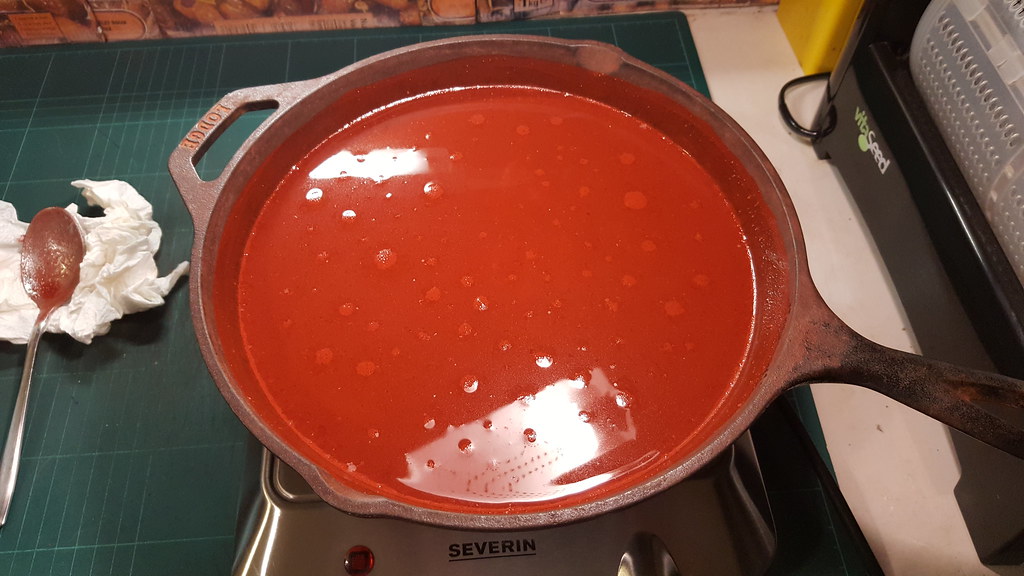
Since I'm preparing 1KG of r-candy mix, there is enough matter over the cooking pan to set the electric plate at max temp.
After a couple of minutes the mix start to boil. Mix well the compound. There is no need to stir continuously, only occasionally:
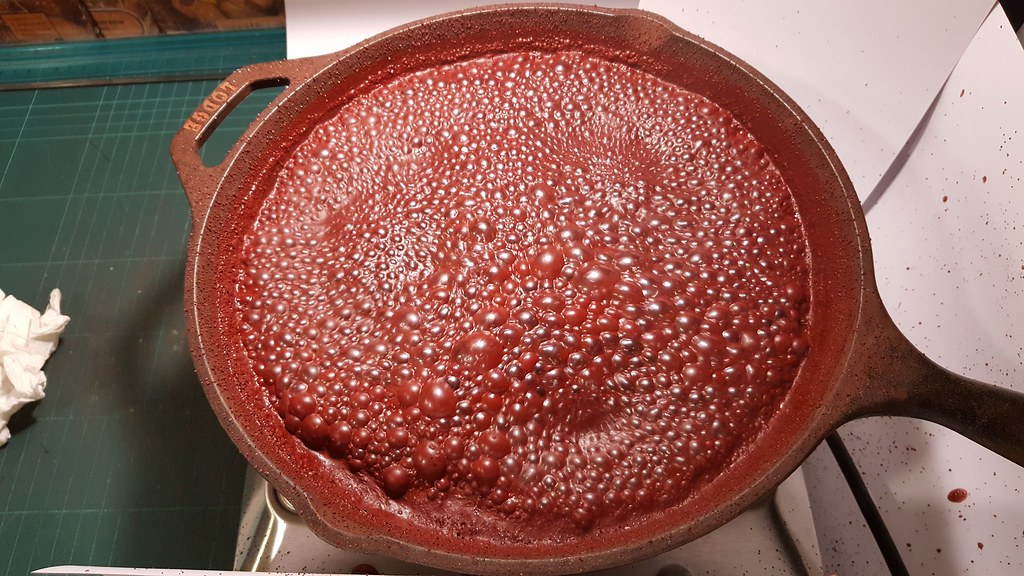
At this point it is better to wear gloves, because incandescent drops of compound will be spilled out of the pan, and they are quite painful
if they land on your hands.
It is also a good idea to place some sheets of paper around the pan to prevent splashes from getting dirty everywhere.
Stir continuously:
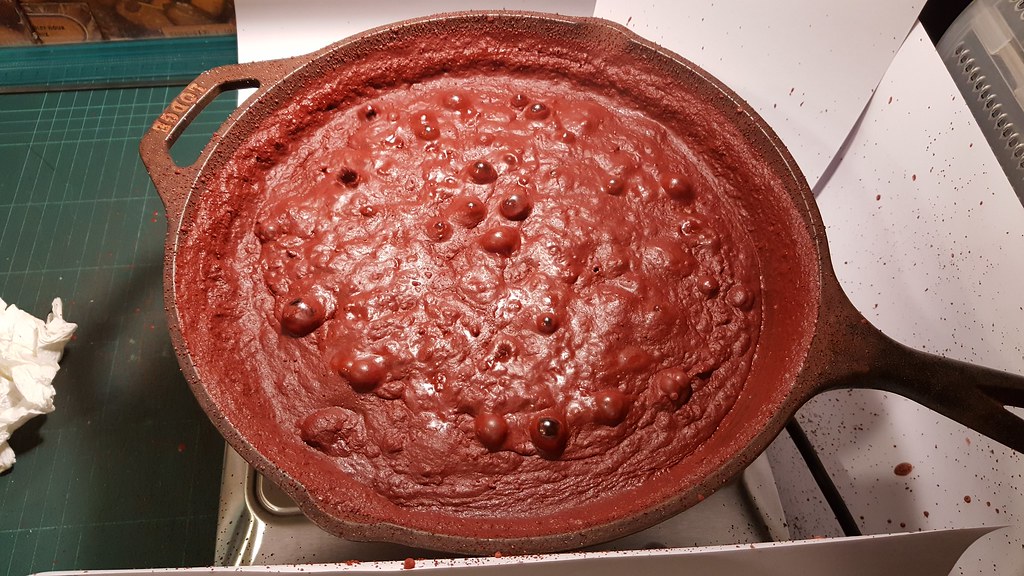
The mix is almost ready.
Set the electric plate at half power.
Stir and squeeze continuously.
If You do not so, there is a risk that the part of the compound in direct contact with the pan burns, and this is not good, either because the mixture
can change performance, or because it could auto-ignite. If you smell a caramel sugar flavour or if You see smoke, leave immediatly the pan from
the plate (but do not place the pan directly on a cold surface, or the pan will crack). Continue to stir until the smell/smoke disappear, and place again
the cooking pan over the plate. Set the electric plate at a lower temperature. Continue to stir and mix:
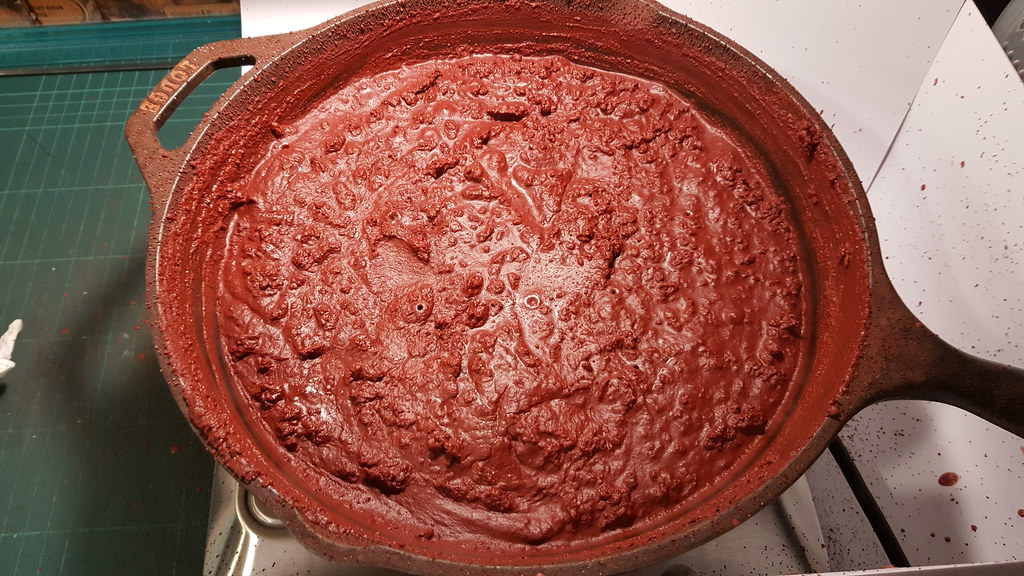
When the mixture is not so much polished and has the same consistency as the polenta, when you will no longer hear the sccchhh of the water that fries
and evaporates, the mixture is ready to be granulated:

Prepare 300ml of denatured ethylic alcohol inside a container. Usually I use a large glass tray because the plastic could deform:

Now, take a spoon full of melted hot compound and quickly dip it into the alcohol.
Squeeze it and mix it quickly before it solidifies.
The mixture will fry a lot but the alcohol will never catch fire.
This will create a mush that will be easy to manage later.
I tried to simulate an accident by setting fire to alcohol present in the tray: the classic blue flame will be created but there will not be
absolutely danger that the mixture may catch on fire (unless you expect till the alcohol completely evaporate, which is absolutely not recommended).
In this case a rag moistened over the flame and this will be extinguished immediately:
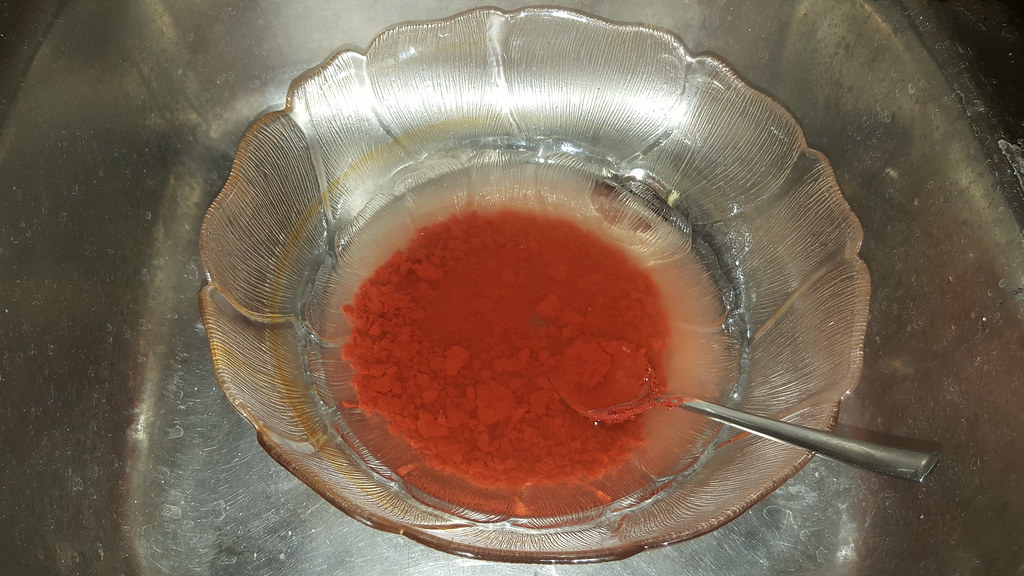
When You have completely drowned all the mix into the alcohol, You can see it white colored: this means that part of the sugar was dissolved
in the remaining alcohol.
Do not try to remove the alcohol: this will cause a loss of sugar and consequently a loss of mix performance:
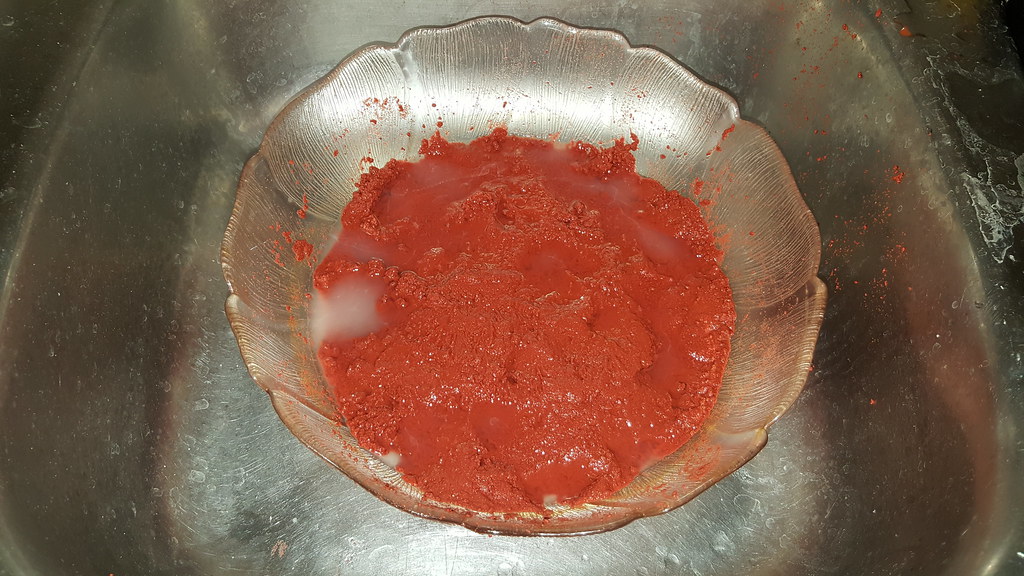
Now keep stirring, crushing and squeezing the mix until all the alcohol has evaporated. It's a fast operation because the alcohol is very hot.
Since there will be a strong exhalation of evaporated alcohol, it is advised to carry out this operation outdoors or in a well-ventilated area.
If you inhale all the evaporated alcohol you will soon have the same sensation as a little drunkenness.
This should be the appearance of the ready mix:
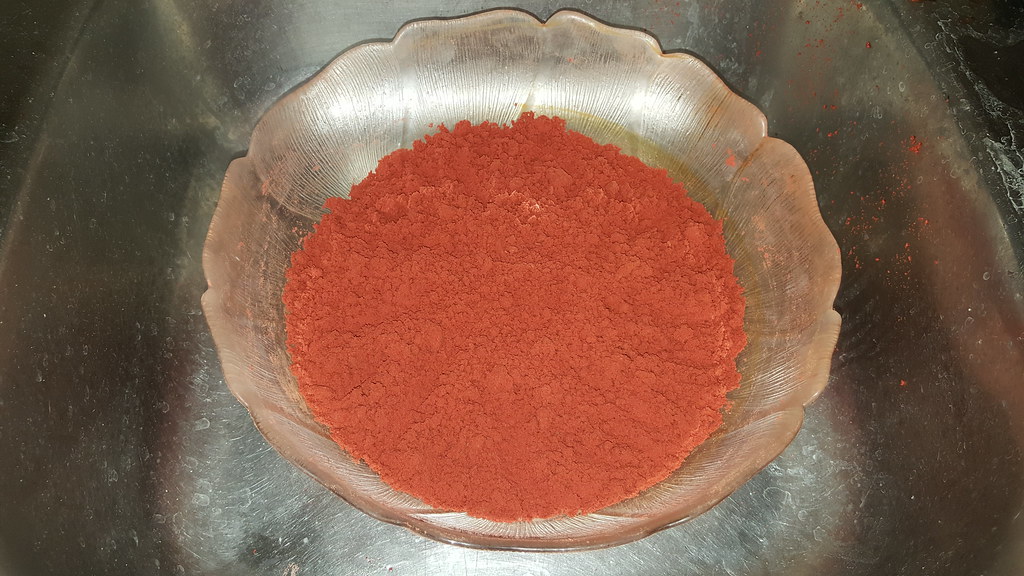
Now spread the mix over a large waxed paper sheet in an open space.
Since the mix is hygroscopic it is highly suggested to do the operation in a low-humidity environment:

After some hours the mix is ready to be granulated.
I suggest do not dry completely the mix or the granulation process will be difficult.
A 20 mesh woven wire is the best choice.
Probably there will be some hard clumps left difficult to granulate: in this case separate them from the rest of the mix and crush them with a pestle
or similar tool (I use a heavy aluminum bar that I roll over the granules applying a strong pressure with my hands).
I used my own frame over a self-builded heatless drying machine:
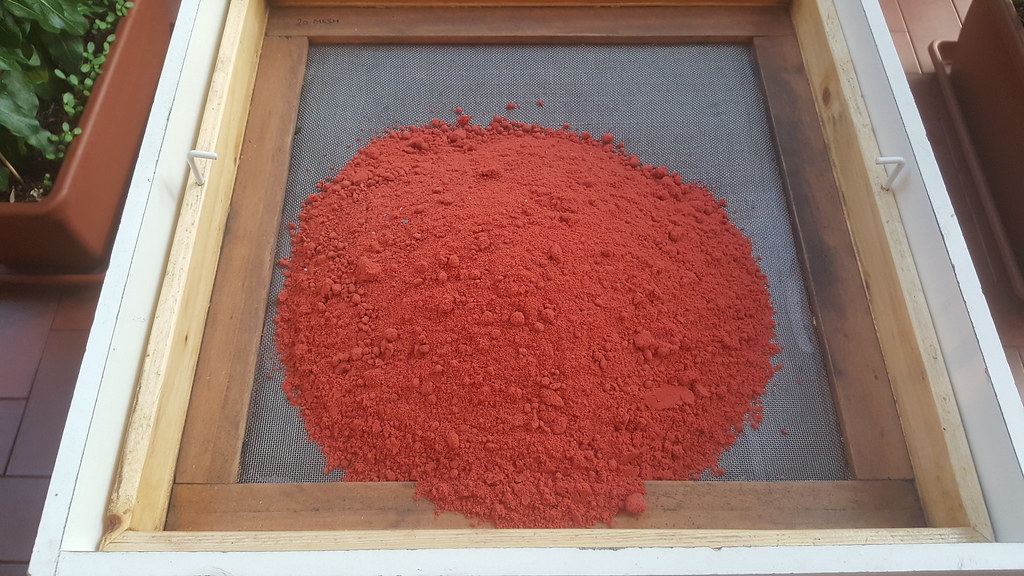
And finally the r-candy mix is ready to be dried.
I suggest to leave a minimal trace of humidity for two valid reasons:
1) The pressing step will be more effective; 2) The pressed mix will harden like a stone when cooked into an electric oven:
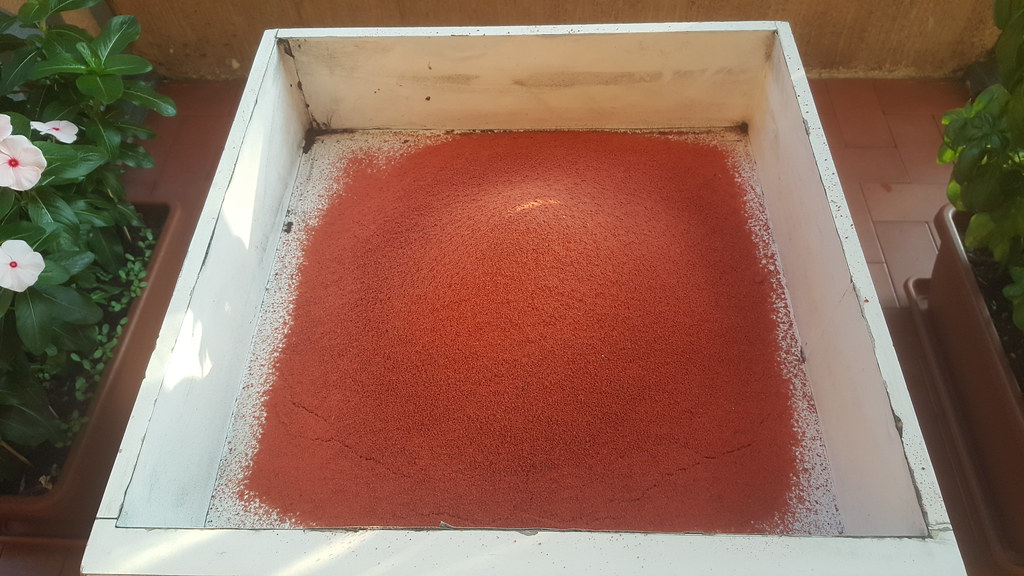
Here is the mix ready to be pressed:
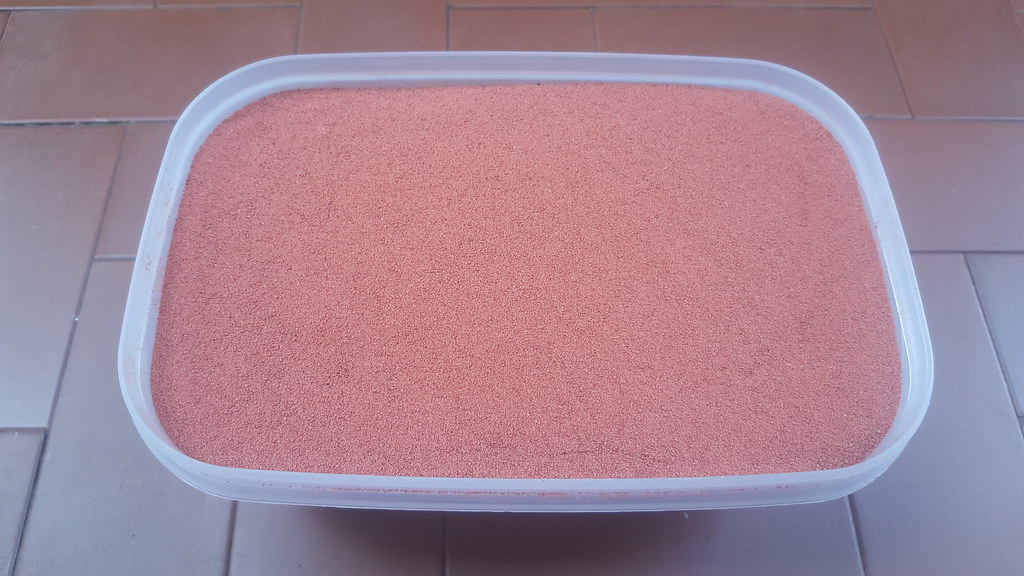
Well, this is all.
The next tutorial will explain how to do fast hot BP indoor safely using a Lortone rock thumbler, 100 brass media spheres and denatured alcohol.
This procedure will be very easy and no lab-intensive.
Richard.
As promised some weeks ago here is the first chapter of a complete tutorial how to make perfect r-candy powered fireworks.
I switched to the granulated version for many reasons, and I'm very happy of my choice and for the good results.
This is the first of many tutorials, and every tutorial that follow this will have a link to the previous one, so the result will
be a complete tutorial divided into various chapters, one for every different step.
First of all, 650 grams of KNO3 (without anticaking), 350 grams of sucrose, 20 grams of Titanium sponge (450-1000nm)
and 10 grams of red iron oxyde (Baltimora type) are placed inside a thick cast iron:

Adding enough distilled water to dissolve the chems. Please remind that too much water will lenghten the cooking time.
Vice versa, too few water will cause a bad dissolution of the chems because will be reached the saturation limit:

Since I'm preparing 1KG of r-candy mix, there is enough matter over the cooking pan to set the electric plate at max temp.
After a couple of minutes the mix start to boil. Mix well the compound. There is no need to stir continuously, only occasionally:

At this point it is better to wear gloves, because incandescent drops of compound will be spilled out of the pan, and they are quite painful
if they land on your hands.
It is also a good idea to place some sheets of paper around the pan to prevent splashes from getting dirty everywhere.
Stir continuously:

The mix is almost ready.
Set the electric plate at half power.
Stir and squeeze continuously.
If You do not so, there is a risk that the part of the compound in direct contact with the pan burns, and this is not good, either because the mixture
can change performance, or because it could auto-ignite. If you smell a caramel sugar flavour or if You see smoke, leave immediatly the pan from
the plate (but do not place the pan directly on a cold surface, or the pan will crack). Continue to stir until the smell/smoke disappear, and place again
the cooking pan over the plate. Set the electric plate at a lower temperature. Continue to stir and mix:

When the mixture is not so much polished and has the same consistency as the polenta, when you will no longer hear the sccchhh of the water that fries
and evaporates, the mixture is ready to be granulated:

Prepare 300ml of denatured ethylic alcohol inside a container. Usually I use a large glass tray because the plastic could deform:

Now, take a spoon full of melted hot compound and quickly dip it into the alcohol.
Squeeze it and mix it quickly before it solidifies.
The mixture will fry a lot but the alcohol will never catch fire.
This will create a mush that will be easy to manage later.
I tried to simulate an accident by setting fire to alcohol present in the tray: the classic blue flame will be created but there will not be
absolutely danger that the mixture may catch on fire (unless you expect till the alcohol completely evaporate, which is absolutely not recommended).
In this case a rag moistened over the flame and this will be extinguished immediately:

When You have completely drowned all the mix into the alcohol, You can see it white colored: this means that part of the sugar was dissolved
in the remaining alcohol.
Do not try to remove the alcohol: this will cause a loss of sugar and consequently a loss of mix performance:

Now keep stirring, crushing and squeezing the mix until all the alcohol has evaporated. It's a fast operation because the alcohol is very hot.
Since there will be a strong exhalation of evaporated alcohol, it is advised to carry out this operation outdoors or in a well-ventilated area.
If you inhale all the evaporated alcohol you will soon have the same sensation as a little drunkenness.
This should be the appearance of the ready mix:

Now spread the mix over a large waxed paper sheet in an open space.
Since the mix is hygroscopic it is highly suggested to do the operation in a low-humidity environment:

After some hours the mix is ready to be granulated.
I suggest do not dry completely the mix or the granulation process will be difficult.
A 20 mesh woven wire is the best choice.
Probably there will be some hard clumps left difficult to granulate: in this case separate them from the rest of the mix and crush them with a pestle
or similar tool (I use a heavy aluminum bar that I roll over the granules applying a strong pressure with my hands).
I used my own frame over a self-builded heatless drying machine:

And finally the r-candy mix is ready to be dried.
I suggest to leave a minimal trace of humidity for two valid reasons:
1) The pressing step will be more effective; 2) The pressed mix will harden like a stone when cooked into an electric oven:

Here is the mix ready to be pressed:

Well, this is all.
The next tutorial will explain how to do fast hot BP indoor safely using a Lortone rock thumbler, 100 brass media spheres and denatured alcohol.
This procedure will be very easy and no lab-intensive.
Richard.
Last edited:



